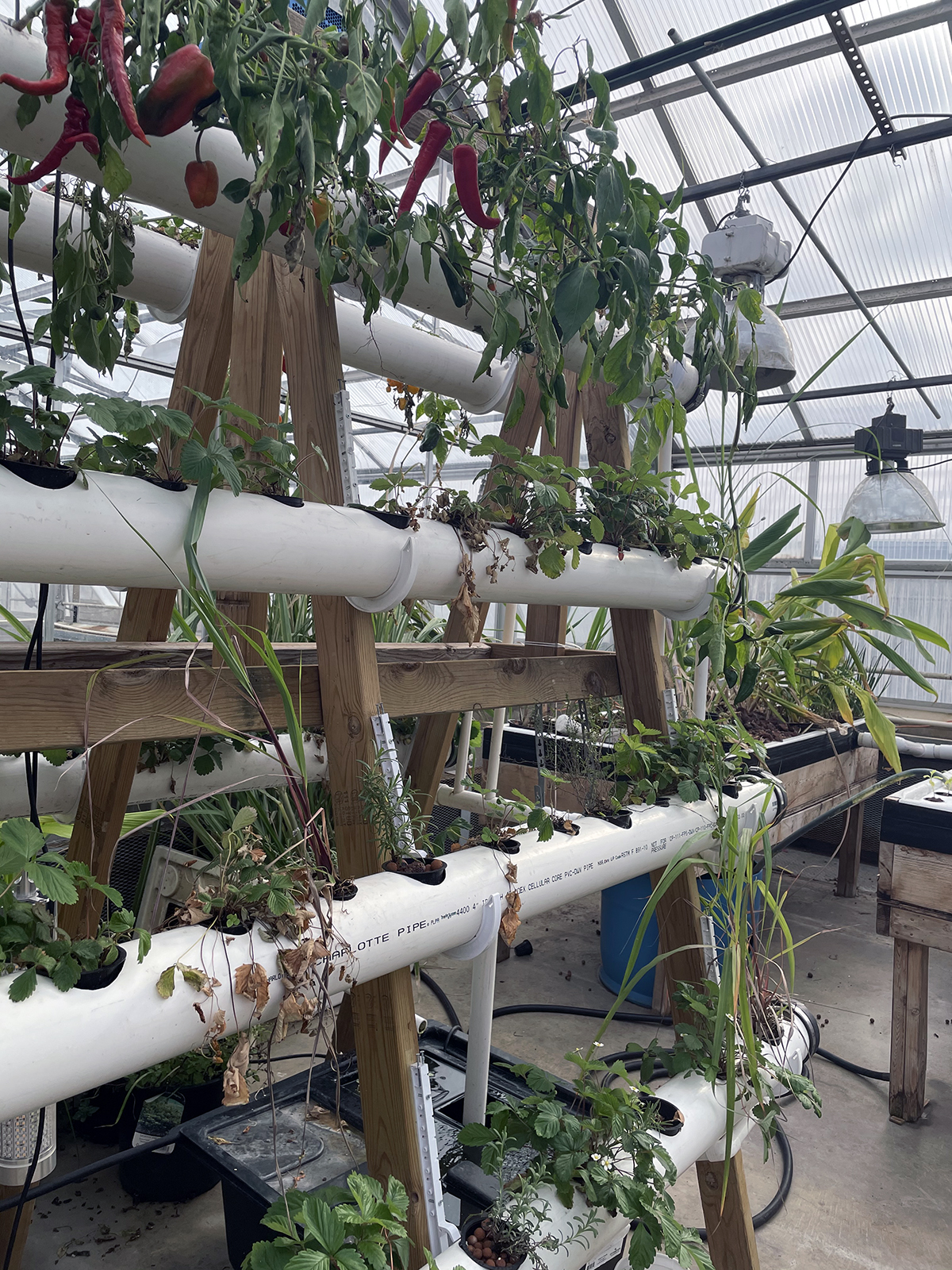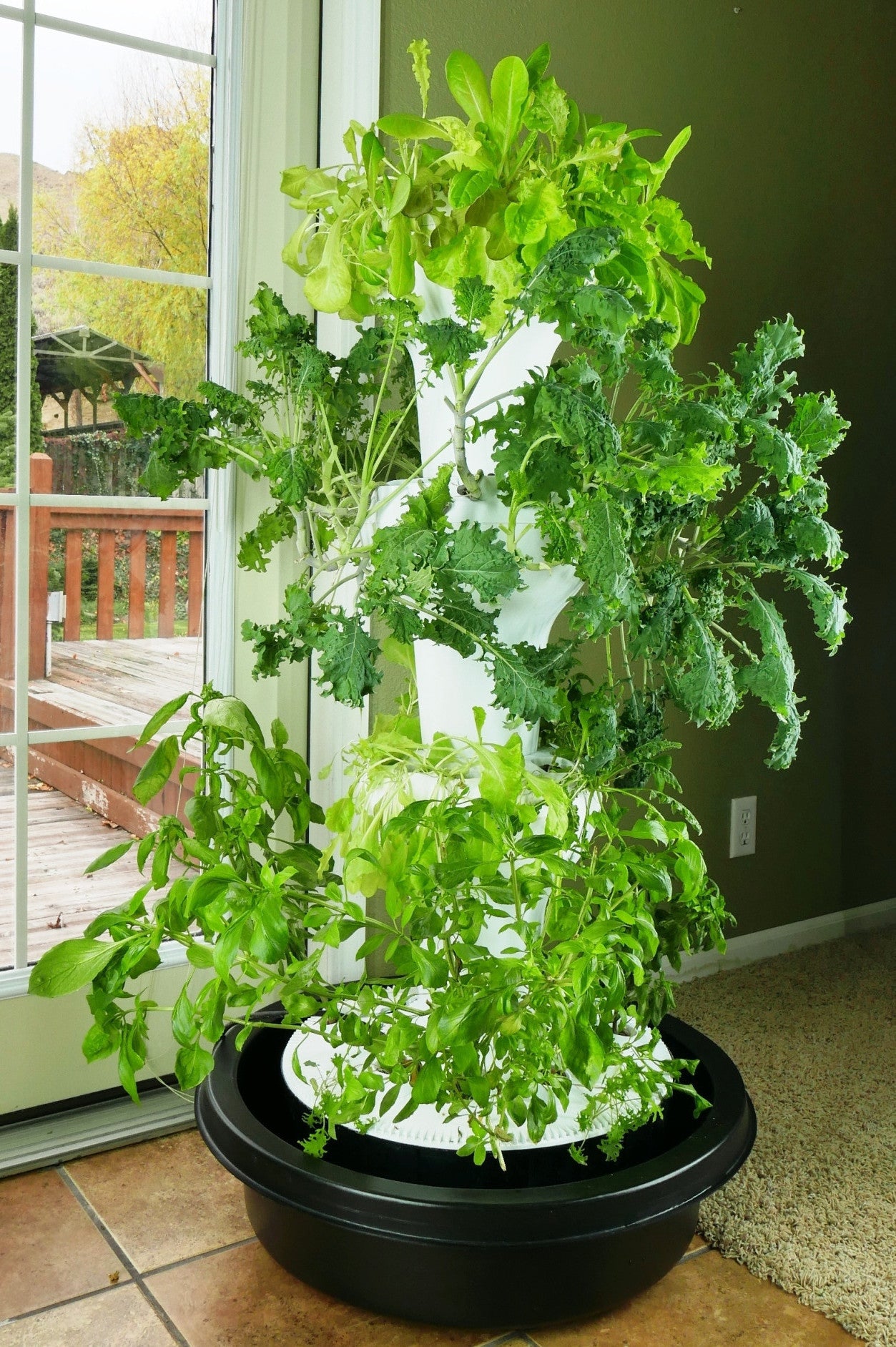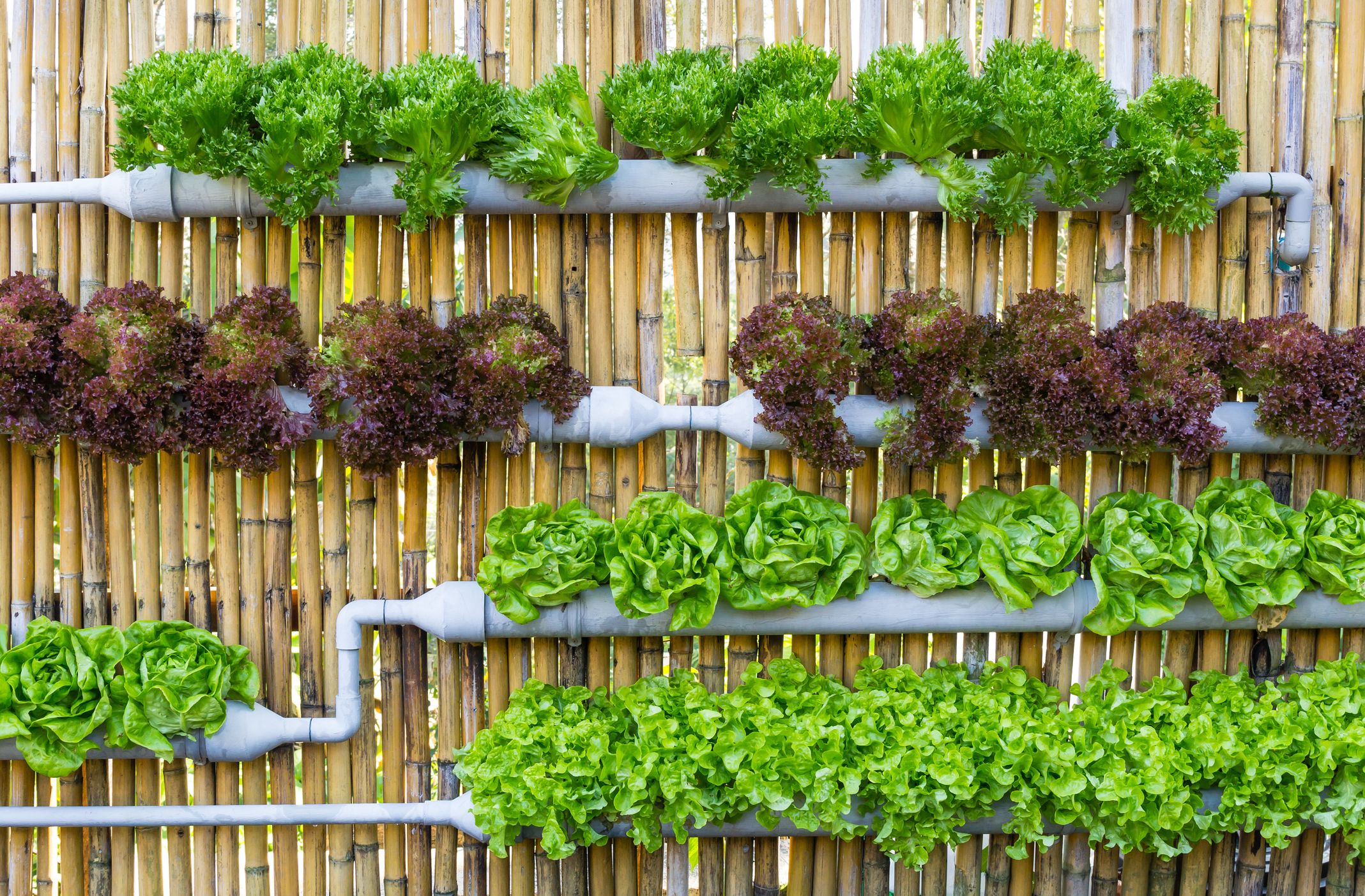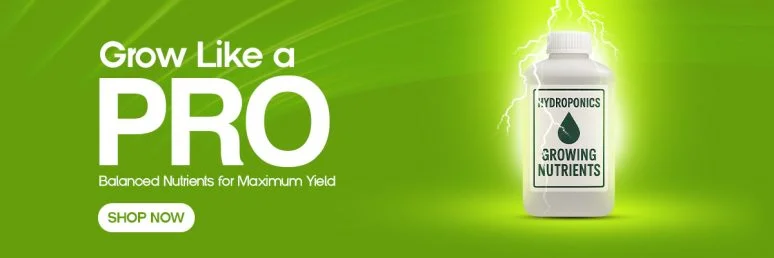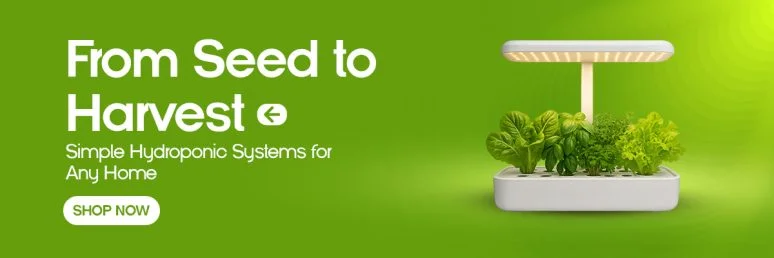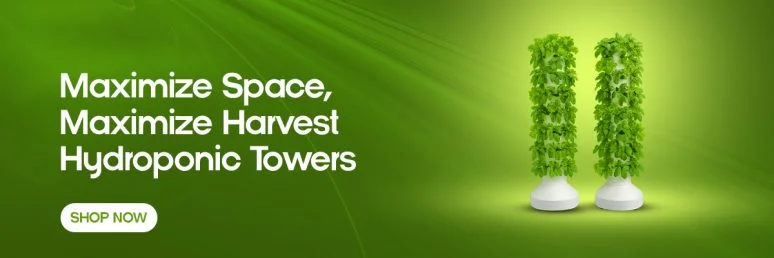Best Hydroponics Test Kits for Beginners and Pros Alike
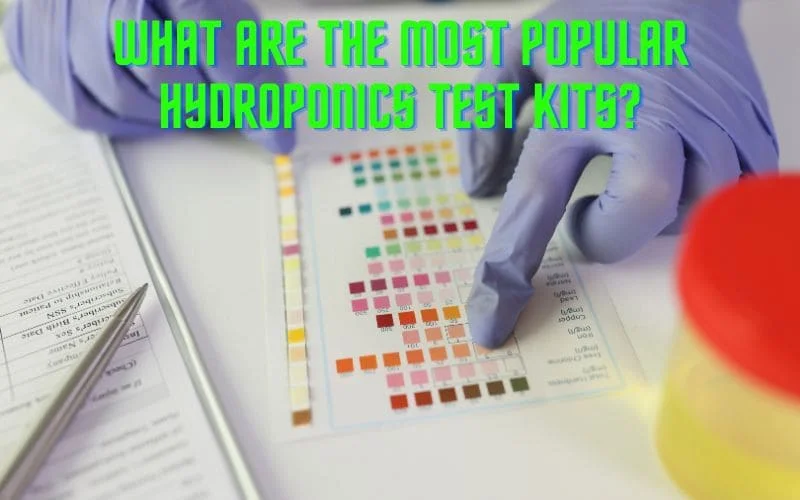
Key Takeaways
- Regular testing of pH, EC/TDS, and dissolved oxygen levels is essential for healthy plant growth in hydroponics systems.
- The Vivosun pH and TDS Meter Combo offers excellent value for beginners while the Bluelab Guardian Monitor provides professional-grade precision for serious growers.
- Proper calibration of testing equipment ensures accurate readings and should be performed at least monthly.
- Different plants thrive at different pH levels, typically between 5.5-6.5, making reliable testing crucial for crop-specific adjustments.
- Hydroponics Connection provides comprehensive guides and expert recommendations for growers at all experience levels looking to optimize their systems.
Testing your hydroponic system isn’t just a good practice—it’s the difference between thriving plants and total crop failure. Without proper monitoring, you’re essentially gardening blindfolded, hoping your nutrient solution magically maintains the perfect balance your plants need. I’ve seen countless hydroponic setups fail simply because growers skipped this critical step.
The right test kit provides a window into your system’s invisible chemistry, allowing you to make data-driven adjustments rather than guessing. Hydroponics Connection has spent years researching and testing the most reliable monitoring solutions to help both beginners and professionals maintain optimal growing conditions. Their expertise has shown that consistent testing leads to healthier plants, faster growth cycles, and significantly higher yields.
In this comprehensive guide, I’ll walk you through everything you need to know about hydroponics testing—from the fundamental parameters you should be monitoring to detailed reviews of the best test kits on the market for every budget and skill level.
Why Your Hydroponic Garden Will Fail Without Proper Testing
“Small-scale hydroponics | UMN Extension” from extension.umn.edu and used with no modifications.
Imagine building a state-of-the-art hydroponic system, selecting premium nutrients, and choosing perfect lighting—only to watch your plants develop yellowing leaves, stunted growth, and eventually die. Without testing, this scenario is all too common. Hydroponic plants exist in a delicate ecosystem where slight chemical imbalances can block nutrient uptake completely. For those interested in expanding their hydroponic garden, consider exploring hydroponic red cabbage microgreens as a fresh addition to your setup.
Unlike soil gardening, where the growing medium provides some buffering capacity, hydroponic systems offer no forgiveness. A pH drift of just 0.5 can make certain nutrients completely unavailable to your plants, while excessive nutrient concentration can cause root burn and toxicity issues. Temperature fluctuations outside the ideal range can dramatically slow growth or encourage pathogen development.
The most frustrating part? These problems develop invisibly until plant damage appears—at which point you’re already playing catch-up. Regular testing reveals issues before visible symptoms develop, allowing for preemptive corrections rather than emergency interventions. When you consider that a quality test kit costs less than a single crop failure, the investment becomes a no-brainer for serious growers.
Essential Measurements for Hydroponic Success
“Foody 12 Hydroponic System | Foody …” from foodyverticalgarden.com and used with no modifications.
Successful hydroponic growing requires monitoring four critical parameters that directly impact plant health and development. Understanding what each measurement means and how they interact gives you unprecedented control over your garden’s performance.
pH Testing: The Foundation of Nutrient Availability
pH measures the acidity or alkalinity of your nutrient solution on a scale from 0-14, with 7 being neutral. This reading fundamentally determines which nutrients your plants can access. Most hydroponic crops thrive in slightly acidic conditions between 5.5-6.5, where all essential nutrients remain available for uptake.
When pH drifts too high (alkaline), iron, manganese, copper, zinc, and boron become increasingly unavailable, leading to deficiencies and yellowing leaves. If pH drops too low (acidic), calcium and magnesium uptake becomes restricted. Perhaps most critically, phosphorus availability—essential for flowering and fruiting—peaks within a very narrow pH window.
Your plants continuously change the pH of their environment as they grow, making regular testing and adjustment an ongoing necessity rather than a one-time setup. Most hydroponic gardens require pH checking at least every 2-3 days, with more frequent monitoring during periods of rapid growth or flowering.
EC/TDS/PPM: Measuring Nutrient Concentration
Electrical Conductivity (EC), Total Dissolved Solids (TDS), and Parts Per Million (PPM) all measure the concentration of dissolved nutrients in your solution. These readings tell you whether your plants have enough food or are at risk of nutrient burn from excess concentration.
Think of EC as your “nutrient thermostat”—it doesn’t tell you which specific elements are present, but rather the total ionic concentration. Young seedlings generally prefer a lower EC (0.8-1.2), while mature fruiting plants may thrive at higher concentrations (1.8-3.0, depending on species). The ability to precisely adjust nutrient strength based on growth stage and plant type gives hydroponic growers unparalleled control over crop development.
Many beginners make the critical mistake of assuming “more nutrients = better growth.” In reality, excessive EC levels prevent proper osmosis at the root zone, making it harder for plants to absorb water and leading to what appears paradoxically as drought stress in a water-based system. Regular EC testing prevents this common pitfall.
Dissolved Oxygen: The Overlooked Vital Sign
Oxygen availability at the root zone is often the most neglected measurement in hydroponics, yet insufficient dissolved oxygen (DO) can devastate your garden overnight. Plants absorb oxygen through their roots for respiration, and this process happens continuously—even more intensely at night when photosynthesis stops.
Warm water holds significantly less oxygen than cool water, creating a dangerous situation where high reservoir temperatures can cause oxygen levels to plummet below the 5-6 mg/L minimum threshold most plants require. Low oxygen levels slow nutrient uptake, weaken root systems, and create perfect conditions for root diseases like pythium to flourish.
While dissolved oxygen meters are less common in hobby setups, professional growers consider them essential equipment. For those without dedicated DO meters, maintaining water temperatures between 65-68°F (18-20°C) and ensuring vigorous water movement helps maximize oxygen content.
Temperature: Maintaining the Sweet Spot
Temperature affects virtually every aspect of hydroponic growing—from oxygen availability to nutrient solubility and enzymatic activity within plants. Your nutrient solution temperature should generally remain between 65-75°F (18-24°C) for most crops, with leafy greens preferring the cooler end and fruiting plants the warmer range. For instance, hydroponic red cabbage microgreens thrive in these controlled conditions.
Temperature fluctuations create multiple challenges. Solutions that get too warm (above 78°F/25°C) support algae growth, accelerate nutrient degradation, and reduce dissolved oxygen. Excessively cool solutions (below 60°F/15°C) slow root metabolism, nutrient uptake, and overall growth rate.
Digital thermometers with min/max memory functions are invaluable for tracking temperature patterns throughout the day and night. Many advanced growers install automated cooling systems triggered by temperature probes to maintain ideal conditions regardless of ambient temperature changes.
7 Best Test Kits for Beginner Hydroponic Growers
“DIY Hydroponic Garden …” from www.countryliving.com and used with no modifications.
When you’re just starting your hydroponic journey, you need reliable testing equipment that won’t require a PhD to operate. I’ve personally tested dozens of entry-level kits and narrowed down the field to these seven standouts that deliver professional results without overwhelming complexity. For those interested in lighting options, understanding the difference between red and blue LED grow lights can also enhance your hydroponic setup.
1. Vivosun pH and TDS Meter Combo
Price: $25-35
Accuracy: pH ±0.1, TDS ±2%
Battery Life: 1,000+ hours
Waterproof: Yes (IP67 rated)
Auto-Calibration: Yes
For beginners seeking the best value proposition, the Vivosun combo kit hits the sweet spot between affordability and functionality. This package includes both a digital pH pen and TDS meter, giving you everything needed to monitor the two most critical parameters in your hydroponic system. I was particularly impressed with the quick response time—you’ll get stable readings within 10-15 seconds.
The backlit display makes readings visible even in dimly lit grow rooms, and the auto-off feature preserves battery life. While not as precise as laboratory-grade equipment, the ±0.1 pH accuracy is more than sufficient for maintaining proper nutrient solutions. The protective case and included calibration solutions make this a true “ready-to-use” package right out of the box.
One notable advantage is the automatic temperature compensation (ATC) feature, which adjusts readings based on solution temperature—something many budget meters lack. This ensures consistent measurements regardless of whether you’re testing cool nutrient solutions in the morning or warmer ones in the afternoon. The hold function also locks in readings, allowing you to remove the meter from solution before recording values. For those looking to start with hydroponics, consider exploring hydroponic garden kits for a comprehensive setup.
While the included batteries typically last 6-8 months with regular use, I recommend keeping spares on hand as the meters provide no low-battery warning before failing. The calibration process is straightforward but needs to be performed monthly to maintain accuracy—a reasonable maintenance schedule for the price point. For those interested in optimizing their hydroponic setup, understanding the difference between red and blue LED grow lights can also be beneficial.
2. General Hydroponics pH Control Kit
The General Hydroponics pH Control Kit represents the most comprehensive solution for beginners concerned primarily with pH management. Unlike digital options, this liquid test kit uses color-changing reagents that eliminate battery and calibration concerns. The kit includes pH Up and pH Down solutions, test indicator liquid, and a color-coded vial that makes interpreting results foolproof. What sets this apart from other liquid tests is the precisely formulated pH adjusters specifically designed for hydroponics—they won’t harm beneficial microbes or create nutrient lockout issues that can occur with household pH adjusters like lemon juice or baking soda.
3. Apera Instruments AI209 Value Series pH20 Tester
The Apera pH20 has earned its reputation as the “goldilocks” of pH meters—not too complicated, not too simplistic, with accuracy that outperforms its price range. The replaceable electrode design significantly extends the meter’s lifespan compared to fixed-probe competitors, making it more economical long-term despite the slightly higher initial investment.
What truly distinguishes this meter is its glass bulb sensor technology, which provides faster and more stable readings than the polymer sensors found in most budget meters. The calibration process utilizes a push-button system that confirms successful calibration with a clear indicator, eliminating the guesswork common with other models.
I’ve found the battery life exceptional, with units consistently delivering 1,500+ hours of operation before requiring replacement. The auto-recognition feature for calibration solutions makes maintenance particularly straightforward for those new to hydroponics testing.
Pro Tip: Store the Apera pH20 with the included storage solution in the protective cap between uses. This simple habit can extend electrode life by up to 12 months compared to dry storage.
4. HM Digital TDS-EZ Water Quality Tester
When it comes to dedicated TDS meters, the HM Digital TDS-EZ stands as the industry benchmark for accuracy-to-price ratio. This pocket-sized meter delivers laboratory-grade precision (±2%) without the complexity or cost of professional equipment. The one-touch operation and auto-shutoff feature make it particularly user-friendly for hydroponic beginners, while the factory calibration remains remarkably stable for 12+ months under normal use, requiring less maintenance than pH meters typically demand.
5. Bluelab pH Pen
The Bluelab pH Pen represents the entry point into truly professional-grade testing equipment. While considerably more expensive than budget options, this meter’s double-junction probe technology delivers superior accuracy (±0.1 pH) and significantly longer sensor life. The backlit LCD display rotates for easy reading at any angle, and the waterproof construction (fully submersible to 3 feet) provides peace of mind during daily testing routines. What impresses most about this pen is its stability—readings remain consistent even after months of use, and the calibration holds remarkably well between maintenance sessions. For those looking to explore more about hydroponic systems, check out what are the better hydroponic systems.
6. Atlas Scientific pH Test Kit
For the technically inclined hydroponic grower, the Atlas Scientific kit offers laboratory-grade precision with its glass electrode sensor and three-point calibration system. This kit stands out for its exceptional ±0.02 pH accuracy—the highest precision in our beginner-friendly lineup. The kit includes premixed calibration solutions, storage solution, and comprehensive documentation that elevates your understanding of pH measurement beyond simple numbers. While overkill for casual growers, this kit becomes invaluable when working with sensitive crops or automated dosing systems where precise pH control is critical.
7. Kinsco Digital pH & EC Meter Set
The Kinsco set delivers remarkable value with its 3-in-1 functionality, measuring pH, EC, and temperature with a single compact device. The auto-ranging feature automatically selects the appropriate measurement scale, eliminating confusion for beginners navigating between different nutrient concentration units. The sealed housing prevents water damage—a common failure point in budget meters—while the included carrying case organizes all components for convenient storage. What particularly impresses is the built-in temperature compensation, which automatically adjusts readings based on solution temperature to ensure consistent measurements throughout seasonal changes.
5 Professional-Grade Test Kits Worth the Investment
“Hydroponic Gardening — Bob’s Market …” from www.bobsmarket.com and used with no modifications.
For serious hydroponic growers looking to maximize yields and precision, professional-grade testing equipment offers capabilities that justify their higher price tags. These sophisticated instruments provide enhanced accuracy, greater durability, and advanced features that can dramatically improve crop consistency and reduce maintenance time.
1. Bluelab Guardian Monitor
| Feature | Specification | Benefit |
|---|---|---|
| Continuous Monitoring | 24/7 real-time display | Catches dangerous fluctuations immediately |
| Accuracy | pH ±0.1, EC ±0.1 | Laboratory-grade precision |
| Visual Alarms | Customizable high/low limits | Instant alerts when parameters drift |
| Data Logging | 30-day measurement history | Identifies patterns and trends |
The Bluelab Guardian represents the gold standard in continuous hydroponic monitoring. Unlike handheld meters that provide only periodic snapshots, this wall-mounted unit delivers constant vigilance over your nutrient solution. The large, backlit display shows pH, EC, and temperature simultaneously, with color-coded indicators that make status checks possible from across the room. If you’re interested in exploring more hydroponic garden kits, there are various options available to suit different needs and preferences.
What distinguishes the Guardian is its proactive alarm system that alerts you immediately when parameters drift outside your preset ranges—often catching problems hours or days before plants would show visible symptoms. The separate probe design allows for flexible placement, keeping electronics safely away from water while positioning sensors optimally within your reservoir.
The data logging functionality records measurement trends, helping you identify patterns like gradual pH drift or daily temperature fluctuations that might otherwise go unnoticed. For commercial growers, this feature alone can prevent crop losses worth many times the unit’s cost. The sophisticated double-junction pH probe resists contamination from nutrients and cleaning solutions, typically delivering 12-18 months of reliable service before replacement.
While the initial investment approaches $300, the Guardian’s durability and precision make it more economical long-term than repeatedly replacing lower-quality meters. The peace of mind from knowing your system remains within optimal parameters even when you’re away justifies the premium price for serious growers.
2. Apera Instruments PC60 Premium 5-in-1 Tester
The Apera PC60 represents the Swiss Army knife of water testing, measuring pH, EC, TDS, salinity, and temperature in one rugged handheld device. What separates this professional instrument from multifunction budget meters is its exceptional accuracy across all parameters and the ability to switch between different measurement modes with a single button press. The PC60’s quick-calibration mode allows you to calibrate all functions in under two minutes—a significant time-saver for commercial operations.
The replaceable sensor module design means you’re not replacing the entire unit when a probe eventually wears out, making this a more sustainable and economical choice over time. With its IP57 waterproof rating and shock-resistant case, this meter withstands the harsh realities of greenhouse environments where humidity, temperature fluctuations, and occasional drops are inevitable.
3. Milwaukee Instruments MW802 pH/EC/TDS Meter
The Milwaukee MW802 has earned its reputation among commercial growers for its exceptional reliability in high-humidity environments. This professional meter features separate pH and EC/TDS probes, allowing for more precise placement in different parts of your system and independent replacement when needed. The automatic temperature compensation works across an impressive range (0-50°C), ensuring accurate readings regardless of seasonal temperature variations.
What distinguishes this meter is its stability during extended testing sessions—readings remain consistent even after hours of continuous use, making it ideal for methodical system adjustments or troubleshooting complex nutrient imbalances. The built-in automatic endpoint feature signals when measurements have stabilized, eliminating guesswork about when to record values. For operations running multiple hydroponic systems with different nutrient formulations, the Milwaukee’s memory function, which stores calibration data, saves significant time during routine testing rounds.
4. Hanna Instruments HI9813-6 Portable pH/EC/TDS Meter
The Hanna HI9813-6 combines laboratory precision with field-ready durability in a professional package designed for serious growers. This comprehensive meter features a single probe that measures pH, conductivity, TDS, and temperature while maintaining exceptional accuracy across all parameters. Unlike consumer-grade meters that struggle with high-mineral nutrient solutions, the Hanna’s specialized probe resists contamination and maintains calibration even when testing concentrated nutrient formulations.
What particularly impresses about this unit is its sophisticated microprocessor technology that automatically compensates for the influence of temperature on both pH and EC readings. The intuitive interface provides one-hand operation even with gloves on—a thoughtful design feature for commercial greenhouse environments. While the higher price point (typically $350-400) represents a significant investment, the unit’s 5-year average operational life and exceptional measurement stability make it cost-effective for professional applications where accuracy directly impacts crop quality and yield. For those interested in exploring more about hydroponic systems, hydroponic Asian pea shoots offer a fast and easy indoor garden guide.
5. Blue Lab Pro Controller
For hydroponic operations where precision is non-negotiable, the Bluelab Pro Controller represents the pinnacle of automated monitoring and adjustment technology. This sophisticated system not only continuously monitors pH and EC but actively corrects imbalances by triggering dosing pumps when parameters drift outside preset ranges. The controller’s intelligent programming prevents overcorrection by using proportional dosing—applying smaller adjustment amounts as readings approach target values. Learn more about hydroponic plant care to optimize your system.
The Pro Controller’s data logging capabilities are unmatched, recording comprehensive parameter histories that can be downloaded and analyzed to identify patterns, optimize nutrient programs, and troubleshoot recurring issues. The lockout feature prevents unauthorized changes to settings, ensuring consistency in commercial operations with multiple staff members. While representing a significant investment (typically $1000-1200 with probes), this system essentially eliminates the labor costs associated with manual testing and adjustment, typically paying for itself within 1-2 growing cycles for commercial operations.
Budget-Friendly Options That Actually Work
“Budget friendly – Free icons” from www.flaticon.com and used with no modifications.
Quality hydroponics testing doesn’t necessarily require breaking the bank. For hobby growers and those just starting their hydroponic journey, these budget-conscious options deliver reliable performance without compromising essential accuracy.
Reliable pH Test Strips Under $10
For growers on the strictest budgets, high-quality pH test strips offer a reliable low-tech solution. The Hydrion 93 Series provides exceptional accuracy (±0.2-0.3 pH) within the critical 5.5-7.0 range most relevant to hydroponics. These specialized strips feature multiple color blocks that create a more nuanced reading than single-color indicators. While lacking the precision of digital meters, their reliability and zero maintenance requirements make them a practical backup even for growers with more sophisticated equipment.
The 100-strip packages typically last 3-4 months of regular testing, making them extraordinarily economical at approximately $8-12 per package. For maximum accuracy, always read strips under natural light or full-spectrum grow lights, as colored LED lighting can distort color perception and lead to misreadings.
Affordable Digital Meters That Won’t Break
The Jellas 3-in-1 meter delivers remarkable value at its $15-20 price point, measuring pH, TDS, and temperature with respectable accuracy. While not matching the precision of professional equipment, its ±0.1 pH and ±3% TDS accuracy is perfectly adequate for maintaining proper growing conditions in home systems. The automatic temperature compensation feature—rarely found in this price range—ensures consistent readings regardless of solution temperature.
What separates this budget meter from truly disposable options is its replaceable battery design and included calibration powder packets. With proper maintenance, these units typically deliver 8-12 months of reliable service before accuracy begins to drift significantly. For beginners uncertain about their long-term commitment to hydroponics, this meter provides a low-risk entry point that doesn’t compromise basic functionality.
DIY Testing Solutions for Tight Budgets
For the truly budget-conscious, several DIY approaches can provide basic monitoring capabilities until you can invest in proper equipment. Common red cabbage extract creates a surprisingly effective pH indicator that changes from red (acidic) to purple (neutral) to blue/green (alkaline). While not providing numerical precision, this natural indicator clearly shows whether your solution is in the correct range for plant growth. For more advanced setups, consider exploring hydroponic garden kits that can offer more precise measurements and control.
Similarly, a simple electrical conductivity meter can be constructed using two stainless steel probes, a 9V battery, and a basic multimeter—providing approximate nutrient concentration readings at virtually no cost. These DIY approaches lack the precision of commercial equipment but can prevent catastrophic failures by alerting you to major parameter shifts while you save for proper testing equipment.
Calibration: The Secret to Accurate Readings
Even the most expensive meters become worthless without proper calibration. This critical maintenance process ensures your readings reflect actual solution conditions rather than instrument drift. Understanding calibration fundamentals transforms it from a mysterious technical procedure into a straightforward maintenance routine. For those new to hydroponics, understanding how many hours of light hydroponic plants need is also crucial for maintaining healthy growth conditions.
How Often to Calibrate Your Meters
The optimal calibration schedule depends on both your equipment quality and testing frequency. Budget pH meters typically require calibration every 2-4 weeks, while professional models with higher-quality electrodes may maintain accuracy for 4-8 weeks between calibrations. EC/TDS meters generally hold calibration longer, with monthly checks usually sufficient unless you notice inconsistent readings.
Regardless of your equipment grade, always perform calibration when: you first purchase a meter, after replacing batteries or electrodes, following storage periods longer than two weeks, after testing particularly concentrated solutions, or whenever readings seem suspicious compared to plant symptoms. For commercial operations where crop decisions depend on measurement accuracy, implementing a regular weekly calibration schedule regardless of perceived drift provides valuable quality assurance. Additionally, understanding the difference between red and blue LED grow lights can further enhance the precision of your hydroponic system.
Step-by-Step Calibration Process
Proper pH meter calibration requires at least two-point verification using standardized buffer solutions. Begin with a neutral (pH 7.0) solution, adjust your meter accordingly, then confirm accuracy with an acidic (typically pH 4.0) solution that closely matches your target hydroponic range. Always rinse electrodes thoroughly with distilled water between calibration solutions to prevent cross-contamination.
For EC/TDS meters, single-point calibration using a 1413 μS/cm (approximately 700 ppm) standard solution typically provides sufficient accuracy across the range most relevant to hydroponics. Ensure calibration solutions are at room temperature (20-25°C) for optimal results, as temperature significantly affects electrical conductivity readings. Store unopened calibration solutions in a cool, dark location, and replace them every 6-12 months, as they gradually lose accuracy once opened due to evaporation and contamination.
Signs Your Meters Need Recalibration
Several warning signs indicate immediate calibration is necessary, regardless of your regular schedule. Unstable readings that continuously drift without settling on a value often indicate electrode fouling or calibration issues. Measurements that differ significantly from expected values based on recent adjustments suggest calibration drift. If testing known solutions (like fresh tap water or premixed nutrients) yields unexpected results, recalibration should be your first troubleshooting step.
Physical signs including salt crystal formation on electrodes, visible damage to pH bulbs, or cloudy storage solution also necessitate immediate calibration following appropriate cleaning procedures. For operations with multiple meters, regular cross-verification between instruments provides an excellent early warning system for detecting calibration drift before it affects crop management decisions.
Your Essential Testing Schedule
Consistent monitoring according to a structured schedule prevents problems before they impact plant health. Different system designs and crops require customized monitoring frequencies, but these guidelines provide a solid foundation applicable to most hydroponic setups.
Daily Testing Routine
pH fluctuates more rapidly than any other parameter and should be checked daily for optimal results. Each morning, test and adjust pH to the appropriate range for your specific crops, typically 5.5-6.5 for most hydroponic vegetables and herbs. In recirculating systems where pH drift occurs more quickly, a second daily check in the evening helps catch significant changes before they impact nutrient availability overnight.
Reservoir temperature should also receive daily attention, particularly during seasonal transitions when ambient conditions change rapidly. Record both morning and evening temperatures to identify potentially problematic fluctuations that might require heating, cooling, or insulation adjustments. For systems using perishable organic nutrients or beneficial microbes, dissolved oxygen levels become especially critical and warrant daily verification to prevent anaerobic conditions that promote pathogen growth.
Weekly Maintenance Checks
EC/TDS measurements remain relatively stable in properly maintained systems and typically require verification only 2-3 times weekly. Schedule these tests before adding makeup water to get accurate readings of nutrient concentration without dilution effects. The pattern of EC changes provides valuable information—steadily increasing values suggest excess nutrient buildup from evaporation, while decreasing values indicate plant uptake exceeding replacement rates. For those interested in starting their own system, consider exploring hydroponic garden kits to find the best fit for your needs.
Weekly maintenance should also include calibration verification using known standard solutions. Rather than performing full recalibration, this quick check confirms your instruments remain accurate between formal calibration sessions. Maintaining a testing logbook during weekly checks creates a valuable historical record of system performance, helping identify seasonal patterns and optimization opportunities that might otherwise go unnoticed.
Monthly Deep Dive Analysis
Once monthly, perform comprehensive testing that goes beyond the standard parameters to include dissolved oxygen saturation, water clarity, root zone inspection, and complete system assessment. This deeper analysis often reveals subtle issues before they become critical problems—like early biofilm formation, pump performance degradation, or gradual salt accumulation in growing media.
Monthly sessions provide the perfect opportunity for thorough equipment maintenance, including formal recalibration of all meters, cleaning of probes and sensors, and replacement of any damaged components. For commercial operations, this monthly protocol should include laboratory verification of in-house measurements to ensure ongoing accuracy of testing equipment and procedures.
Interpreting Your Test Results
Collecting measurements is only valuable when you understand what the numbers reveal about your system’s health. Learning to interpret testing data transforms raw numbers into actionable insights that directly improve growing outcomes. The most valuable testing protocol is one where results consistently translate into appropriate adjustments.
Successful interpretation requires understanding the relationships between different parameters. For example, rapidly rising pH accompanied by falling EC often indicates nitrogen depletion, as plants extract acidic nitrogen compounds faster than other nutrients. Conversely, falling pH with stable EC might suggest root zone bacterial activity converting ammonium to nitrate—a natural process that releases hydrogen ions and increases acidity. To learn more about maintaining optimal conditions, check out this guide on how many hours of light hydroponic plants need.
Context matters enormously when evaluating measurements. A pH reading of 6.0 might be perfect for tomatoes but problematic for blueberries. Similarly, an EC of 2.4 represents appropriate nutrient concentration for fruiting plants but could damage leafy greens. Always interpret results relative to your specific crops, growth stage, and environmental conditions rather than arbitrary “ideal” values.
Ideal pH Ranges for Popular Hydroponic Crops
Different plants have evolved to thrive in specific pH environments that maximize nutrient availability for their particular needs. Leafy greens like lettuce and spinach generally prefer a slightly more acidic range (5.5-6.0) that optimizes nitrogen availability for vegetative growth. Fruiting crops including tomatoes and peppers perform best in the middle range (5.8-6.3) where phosphorus and potassium availability peaks to support flower and fruit development. Herbs show considerable variation, with basil preferring higher pH levels (6.0-6.5) while rosemary and thyme thrive under more acidic conditions (5.5-6.0). Berries represent outliers in the hydroponic world, with blueberries requiring distinctly acidic conditions (4.5-5.5) that would stress most other crops.
EC/TDS Targets by Growth Stage
Nutrient concentration requirements change dramatically throughout a plant’s life cycle. Seedlings and young transplants thrive with minimal nutrients (EC 0.8-1.2) as their limited root systems and slow growth rate require only modest nutrition. During vegetative growth, plants benefit from moderate concentration increases (EC 1.2-1.8) that support rapid leaf development without risking nutrient burn.
The transition to flowering and fruiting represents a critical nutrition point where EC requirements typically increase substantially (EC 1.8-2.6) to support the energy-intensive processes of reproduction. During the final ripening and harvest phase, some growers strategically reduce EC levels to enhance flavor development in fruits and improve aromatic oil concentration in culinary herbs. These stage-specific adjustments optimize both yield and quality when implemented with appropriate timing based on regular testing.
Troubleshooting Common Problems Based on Test Results
Systematic interpretation of test results frequently reveals underlying issues before visible symptoms appear. Persistently climbing pH despite regular downward adjustment often indicates alkaline water sources or growing media gradually releasing minerals—requiring either source water treatment or media replacement. Rapidly falling EC combined with yellowing lower leaves typically signals nitrogen deficiency requiring immediate nutrient supplementation, while stable EC with interveinal chlorosis points toward micronutrient issues—often iron or manganese—that need targeted supplementation rather than overall concentration increases.
Storage and Maintenance of Your Test Equipment
The lifespan and accuracy of testing equipment depend largely on proper storage and maintenance between uses. Quality meters properly maintained can deliver years of reliable service, while neglected instruments often fail within months. Establishing good habits around equipment care pays dividends through consistent readings and reduced replacement costs.
Temperature extremes represent the greatest threat to electronic testing equipment. Never leave meters in direct sunlight, near heaters, or in freezing conditions, as these environments damage sensitive components and significantly reduce operational life. Similarly, high humidity environments accelerate corrosion of internal electronics—store equipment in airtight containers with desiccant packets when used in greenhouse settings.
Cleaning Your pH Probes
Regular cleaning prevents contamination buildup that interferes with accurate readings. For routine maintenance, rinse pH electrodes thoroughly with distilled water after each use, gently blotting (never wiping) with lint-free tissue to remove water droplets. Monthly deep cleaning with specialized electrode cleaning solution removes protein films and mineral deposits that gradually accumulate during normal use. For severely contaminated probes showing sluggish response, brief immersion (2-3 seconds) in 0.1M HCl solution followed by thorough rinsing can restore performance—though this stronger approach should be used sparingly to avoid damaging sensitive glass membranes.
Proper Storage Solutions
pH electrodes must remain hydrated to maintain functionality, making proper storage solution essential for equipment longevity. Commercial electrode storage solution (typically 3-4M KCl) maintains appropriate ion concentration around the sensitive membrane, preventing leaching and reference junction contamination. Never store pH electrodes in distilled water, which leaches ions from the reference solution and dramatically shortens probe life.
EC/TDS meters require different storage approaches, as their stainless steel or graphite electrodes perform best when clean and dry between uses. After rinsing with distilled water, allow these probes to air dry completely before storing in protective cases that prevent physical damage to the measuring surfaces. For long-term storage exceeding one month, remove batteries from all meters to prevent corrosion damage from potential leakage.
Extending the Life of Your Testing Equipment
Several practices significantly extend equipment lifespan beyond manufacturer expectations. Develop the habit of holding meters by their bodies rather than cables during use, as cable stress represents the most common failure point in otherwise functional instruments. Apply electrical contact grease to battery compartments annually to prevent corrosion from humidity exposure. For more information on maintaining your hydroponic setup, learn about the difference between red and blue LED grow lights.
For operations using multiple nutrient formulations, dedicated testing equipment for each system prevents cross-contamination issues that gradually degrade measurement accuracy. While this approach requires higher initial investment, the extended equipment life and reduced calibration frequency often make it more economical long-term for commercial operations. Even budget-conscious growers benefit from maintaining separate pH meters for acidic and alkaline adjustments, as extreme pH exposure accelerates electrode degradation.
Final Recommendations: Best Test Kits for Different Hydroponic Systems
“The Hydroponic Garden: An Indoor Garden …” from diydanielle.com and used with no modifications.
Your ideal testing equipment depends largely on your specific hydroponic approach, crop selection, and budget constraints. For small indoor systems like AeroGarden or Lettuce Grow, the Vivosun pH and TDS Combo provides perfect functionality without unnecessary complexity. Deep water culture (DWC) and nutrient film technique (NFT) systems benefit from the Apera Instruments PC60’s multiple measurement capabilities, as these recirculating methods require more comprehensive monitoring. Large commercial operations or automated systems justify the investment in continuous monitoring solutions like the Bluelab Guardian or Pro Controller, where the labor savings and prevented crop losses easily offset the higher initial investment. For organic hydroponic growers using biological additives, the Bluelab pH Pen’s replaceable double-junction electrode resists fouling from beneficial microbes and organic matter that quickly damage standard electrodes. Regardless of your specific setup, remember that even modest testing equipment consistently used will outperform expensive instruments that remain in their case due to complexity or inconvenience.
Frequently Asked Questions
After helping hundreds of growers set up their testing protocols, I’ve found certain questions arise consistently regardless of experience level or system design. These practical answers address the most common concerns about hydroponics testing equipment and procedures.
Understanding these fundamentals helps transform testing from a mysterious technical procedure into a straightforward maintenance routine that becomes second nature. As you gain experience, you’ll develop intuition about your specific system’s patterns and behaviors, making the testing process increasingly efficient and valuable.
How accurate are budget pH meters compared to professional ones?
Budget pH meters typically offer ±0.1-0.2 accuracy compared to ±0.01-0.05 for professional equipment—a difference that sounds significant but remains practically negligible for most hydroponic applications. The critical factor isn’t absolute accuracy but consistency between readings, allowing you to detect and respond to changes. Where budget meters fall short is in stability (readings drift faster during use), durability (most last 12-18 months versus 3-5 years for professional models), and calibration retention (requiring 2-3× more frequent recalibration). For hobby growers, budget meters provide perfectly adequate functionality when properly maintained, while commercial operations benefit from the reliability and reduced maintenance of professional equipment.
Can I use aquarium test kits for hydroponics?
Aquarium pH test kits work adequately for hydroponics, as the testing principles remain identical across applications. However, aquarium EC/TDS meters often use different calibration standards optimized for freshwater aquarium ranges (typically 0.1-0.5 mS/cm) rather than the higher ranges used in hydroponics (1.0-3.0 mS/cm). This difference can cause significant measurement errors when testing nutrient solutions.
The most important limitation involves aquarium ammonia, nitrite, and nitrate test kits, which aren’t calibrated for the high concentration ranges found in hydroponic nutrients and often produce misleading results. While aquarium equipment can serve as a starting point, investing in hydroponics-specific testing tools becomes necessary as you advance beyond basic systems and crops.
How do I know if my nutrient solution needs adjusting?
Beyond basic parameter measurements, several indicators help determine when nutrient adjustment becomes necessary. Visual plant symptoms provide valuable feedback—lower leaf yellowing typically indicates nitrogen deficiency requiring increased EC, while burned leaf tips suggest excessive concentration needing dilution. Growth rate changes offer early warnings, with sudden slowdowns often signaling nutrient imbalances before visible symptoms appear. The rate of pH drift provides another diagnostic clue—solutions requiring frequent pH adjustment (more than once daily) usually indicate fundamental nutrient imbalances rather than normal drift. For recirculating systems, tracking reservoir volume changes helps identify whether plants are consuming water faster than nutrients (increasing EC over time) or taking up nutrients disproportionately (decreasing EC despite evaporation).
What’s the difference between EC, TDS, and PPM measurements?
Electrical Conductivity (EC) measures the solution’s ability to conduct electricity, expressed in millisiemens per centimeter (mS/cm) or microsiemens per centimeter (μS/cm). This direct measurement requires no conversion factors and represents the true physical property being measured. Total Dissolved Solids (TDS) and Parts Per Million (PPM) are calculated values derived from EC measurements using conversion factors that estimate the weight of dissolved nutrients. For those interested in applying these concepts in gardening, you might explore growing hydroponic parsley microgreens at home.
Two common conversion standards exist—the 500 scale (EC × 500 = PPM) used predominantly in North America and the 700 scale (EC × 700 = PPM) more common in European formulations. This difference explains why seemingly identical nutrient recommendations might specify “1400 PPM” in one source and “1000 PPM” in another—they’re actually targeting the same EC using different conversion factors. For consistency, professional growers increasingly prefer working directly with EC measurements to avoid conversion confusion.
How often should I replace my pH probe?
pH probe replacement intervals vary dramatically based on usage patterns, maintenance practices, and environmental conditions. Budget pH pens with non-replaceable electrodes typically provide 12-18 months of reliable service with proper care, after which accuracy degrades beyond reliable calibration. Professional-grade pH meters with replaceable electrodes generally require new probes every 18-24 months under normal use. For more on maintaining your hydroponic system, check out this guide on hydroponic plant light requirements.
Several factors significantly impact electrode lifespan. Testing extreme pH values (below 4.0 or above 9.0) accelerates degradation, as does exposure to high-temperature solutions. Systems using silicon-based antifoaming agents create films on electrode surfaces that dramatically reduce sensitivity and lifespan. The most reliable indicator for replacement isn’t calendar time but performance characteristics—when calibration becomes increasingly difficult to maintain, response time slows significantly, or readings drift rapidly during use, electrode replacement becomes necessary regardless of age.
To maximize your hydroponics success, remember that testing isn’t just about collecting numbers—it’s about developing a consistent relationship with your garden that allows you to speak its language fluently. The best equipment is whichever system you’ll use consistently, and the most valuable measurements are those that translate into timely adjustments. By establishing regular testing habits and understanding how to interpret the results, you’ll develop an intuitive sense of your system’s patterns that transforms growing from guesswork into precision.
